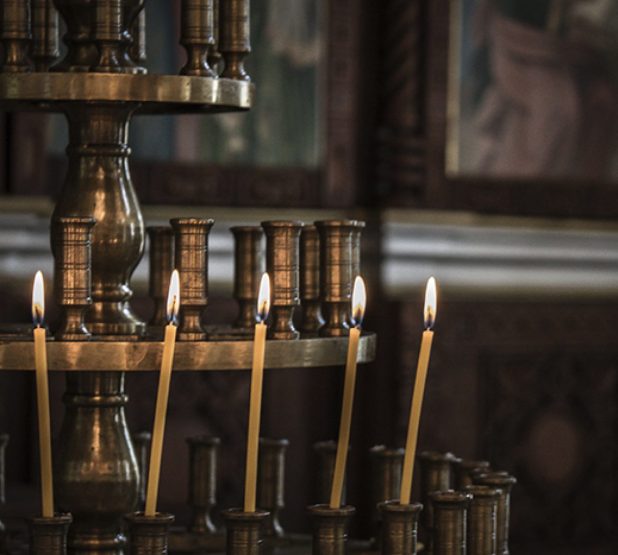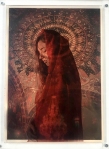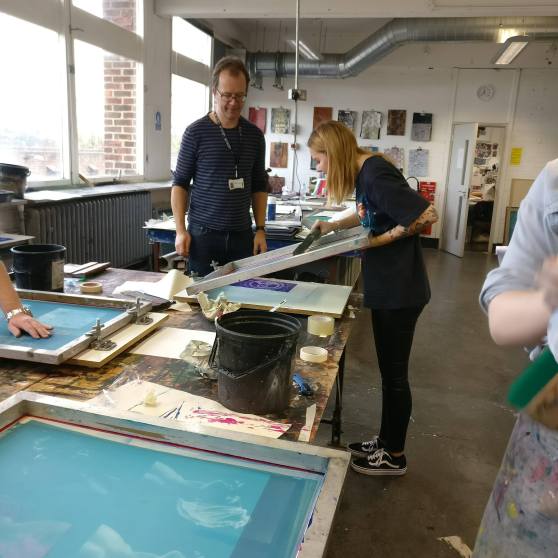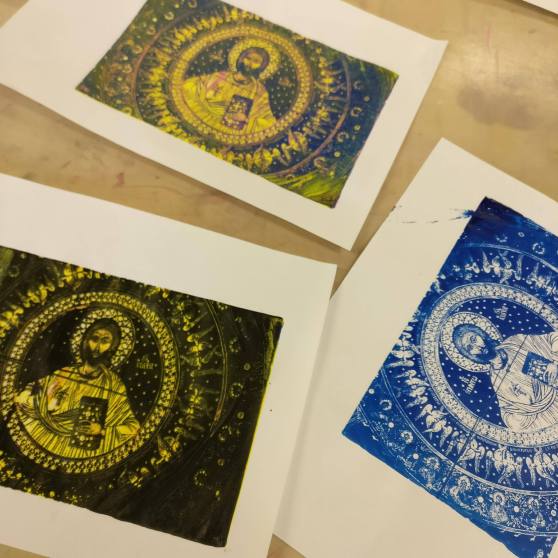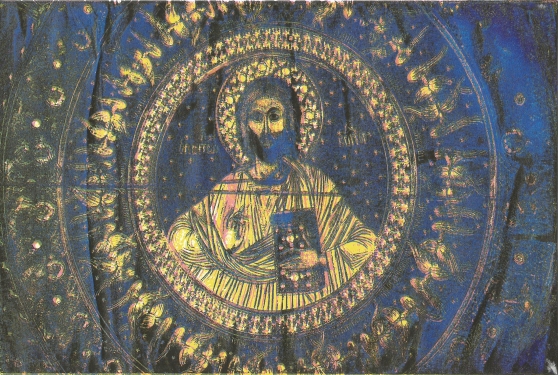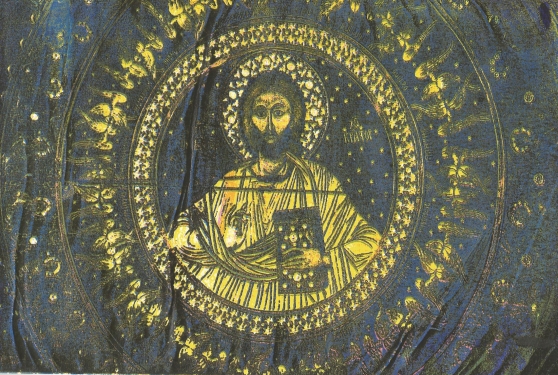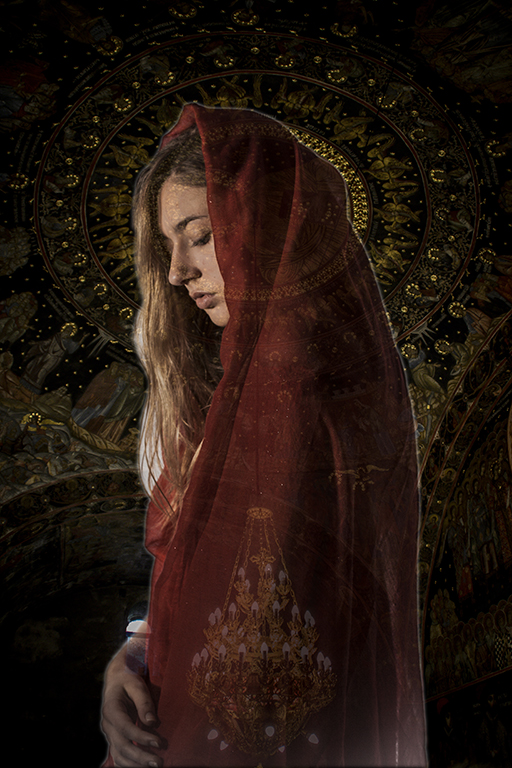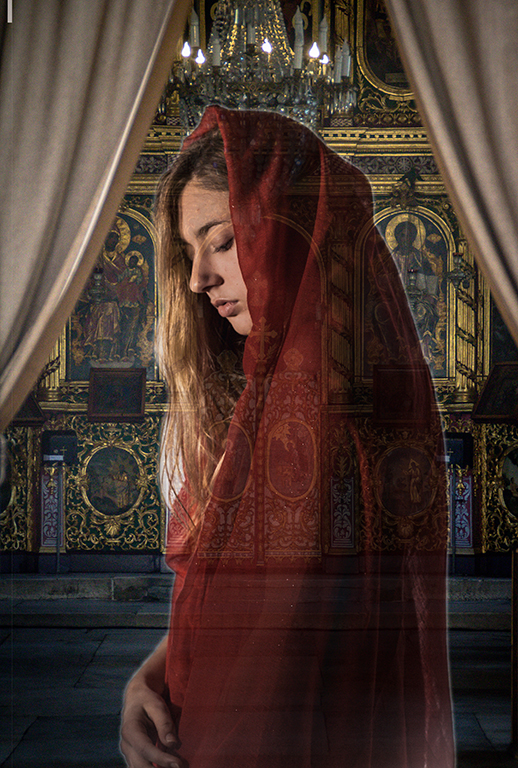For this project, I wanted to base my idea around religious iconography and how it has changed over the years. I wanted to people look at my work and think about religion and what it means to them. I got my inspiration from visiting Bulgaria where I visited different monasteries and churches. Most of them were covered head to toe in bright colours and various religious icons. I did some further research into artists who worked with religion and religious iconography. Some of these artists include Miles Aldridge, Jean-Paul Gaultier, Pierre et Gilles, and Marco D’Amico (The Way of Bizantinum – Vogue.it).
For this, I then gained an idea of where I wanted to go with my project. I wanted to use the images I got from the Bulgaria of the monasteries. I then wanted to recreate female icons like the artists I researched into, then layer them on top of each other creating a 3D effect. I wanted the golds, and the detail from the pictures of the monasteries to really show through and be as brightly coloured as possible. So that’s where I came to the idea of presenting my images on light boxes, as these will make my pictures pop. I did some research on photographers who used light boxes to display there work and research into making them by hand. I started making than with the help of my boyfriend. I knew I wanted to create three different lightboxes a bit bigger than A4. I wanted three because I came across some research which said icons usually come in threes. And I wanted the light boxes a bit bigger than A4 due to the space I am planning to exhibit my work. Having them any bigger would take up too much off the wall and be too much for the viewer take in.
I then started test shooting in the studio for the female icon. I experimented with different clothing and lighting, once I was happy I then edited my favourite images. I then came to printing my pictures. I knew I need to print on something transparent, so it was either printing onto glass or acetate. I researched into glass, but I was too expensive, and wouldn’t have the same resulted I wanted. So that’s when I tried on acetate. I first tried printing at the printers in the library, the colours came out really well, but the images had roller marks on them from the printers. I tried different printers at uni, but they all had the same problem. I then remembered I had printed on acetate at my old school so contacted them to see if I can use theirs and they kindly said yes.
The images came out exactly how I wanted them, and they looked terrific. I then needed to place the photos on top of the light boxes, I know I wanted quite a thick distance between the background image and the female icon, so I tried with 10mm thick Perspex, and this worked perfectly. Overall I’m so happy with how this project has gone. It’s gone exactly how I wanted it to, and the images look better than I imagined they would. The colours in the pictures are fantastic, and the light boxes, in my opinion, bring it all together.
